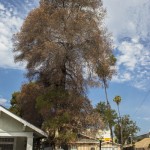Save Our Water and Our Trees
Preserving California’s Urban Trees During Drought
We Need Trees and
Trees Need Water!
- Trees cool our streets and our homes, reducing energy costs and saving lives during heat waves.
- Trees help make our communities more climate resilient.
- Trees improve air and water quality.
- Trees provide shade to the landscape and reduce water needs.
- Trees slow stormwater runoff and help recharge groundwater.
- Trees add value to our homes & neighborhoods.
- Trees make our streets more inviting for walking and biking.
Trees and water are both precious resources. Without watering through dry seasons, we risk losing these benefits from our urban trees. It will take 10, 20 or even 50+ years to grow back mature trees.
Watering Young Trees
(0-3 years old)
- The roots of a young tree are located mostly near the trunk. Young trees need 5 gallons of water 2 – 4 times per week. Create a small watering basin with a berm of dirt.
- One method of watering is to drill a small hole near the bottom of a 5-gallon bucket, place it near the tree, fill it with water, and allow it to slowly drain into the soil.

Watering Mature Trees
(3+ years old)
- For established trees (3+ years old), slowly soak the root zone out toward the drip line –the area under the farthest reaches of the branches– until the water soaks 12-18 inches below the surface. Do not water close to the trunk.
- You can use a soaker hose, a sprinkler hose attachment on a low setting, or other systems. If you use a drip system, monitor it to ensure it’s functioning, add emitters in the tree’s root zone, and increase the water.
- The amount of water will depend on the tree type, your soil, and the weather. Mature trees, in general, usually need water once a month in dry months. Depending on the species, some trees may need more water, and some native species, like native oaks, may not need summer watering in non-drought years.
- Check the soil moisture to determine when to water. Use a screwdriver or soil probe at least 6 inches below the surface near the drip line (the soil beneath the farthest reaches of the tree’s branches). If the soil is hard, dry, and crumbly, add water with a slow soak. If the soil is wet and sticky, allow it to dry before adding more water. Slowly apply water until the soil becomes moist, 6 inches below the surface. You can check soil moisture every 15 minutes once you have started to water, note how long that usually takes, and then schedule a timer for regular watering.
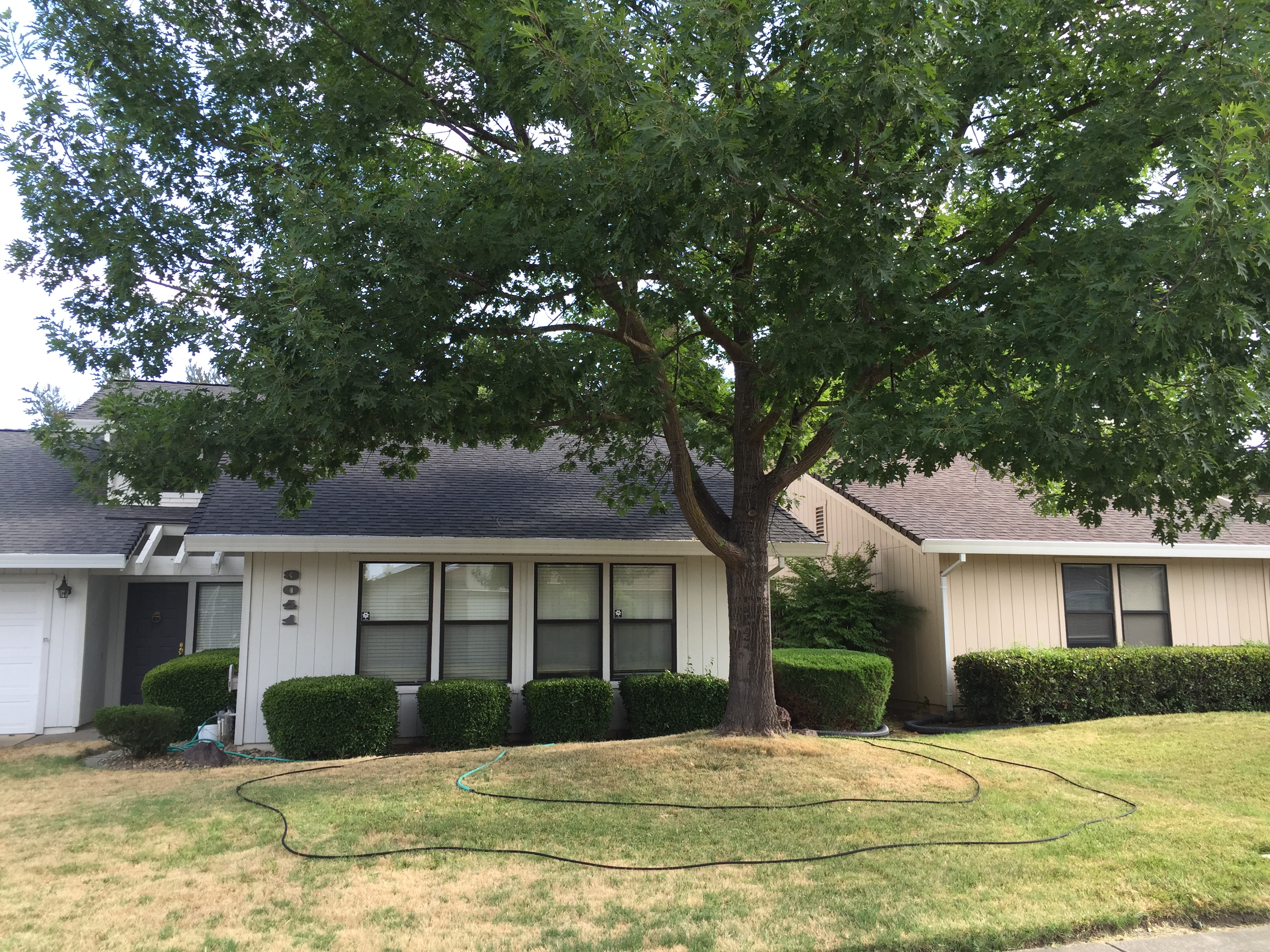

Add Mulch – Save Water!
- Mulch, Mulch, MULCH! Apply a layer of 4 – 6 inches of mulch it helps retain moisture, reducing water needs and protecting your trees.
- Use organic matter such as wood chips or leaf matter.
- Spread mulch in a donut shape in a 4 foot diameter around the tree. Layer the mulch 4-6 inches thick.
- Keep mulch away from the tree trunk! Place mulch about 6 inches away
from the trunk. Too much moisture around the tree trunk can lead to the trunks decay and kill the tree. - Why Mulch? It will help your tree grow faster, retain moisture in the soil, protect roots from extreme temperatures, release nutrients in the soil and prevents the growth of weeds!
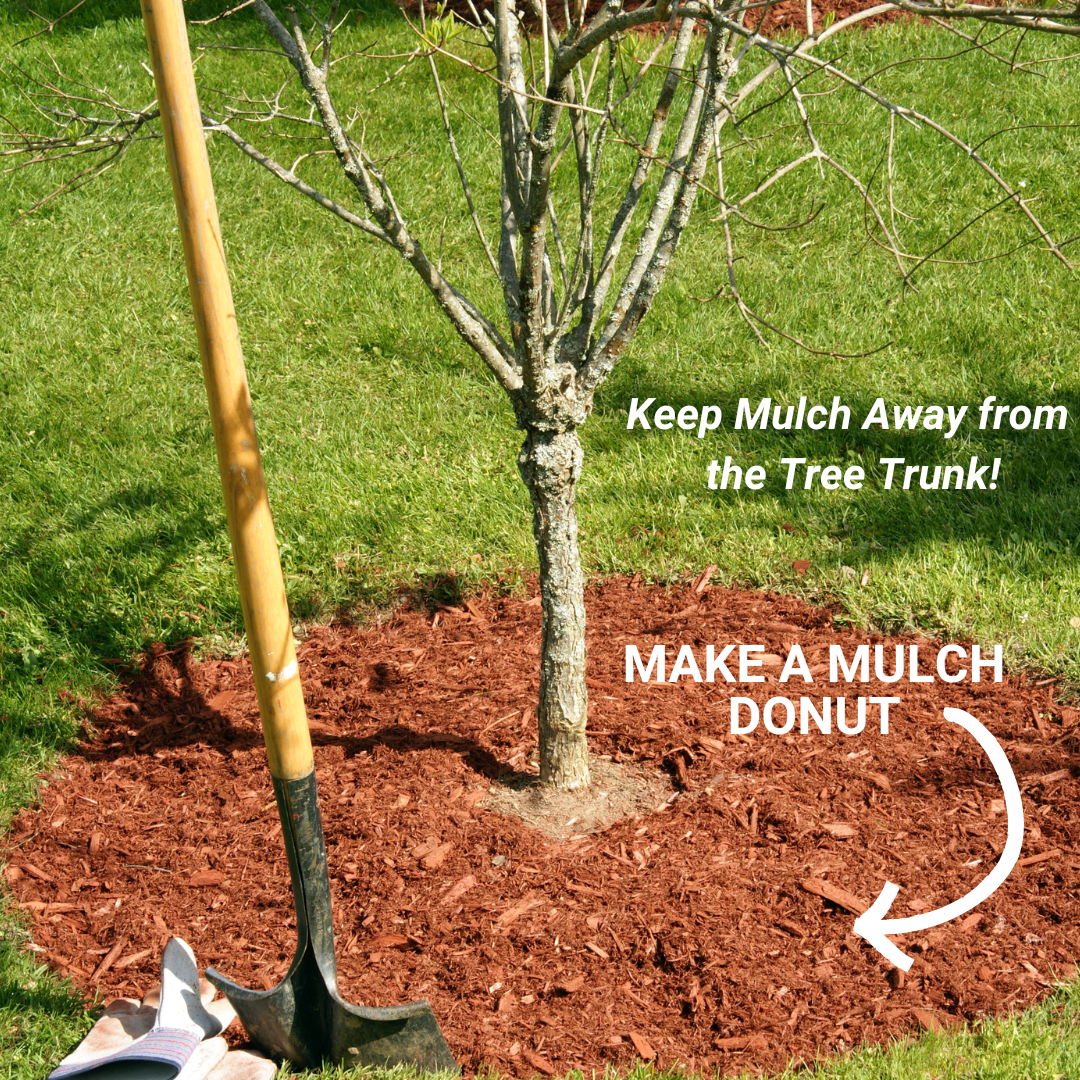
Mistakes to Avoid
- DO NOT place rocks, decomposed granite, weed block fabric, and artificial turf at the base or around your tree. These items will increase water runoff and trap heat in the soil.
- DO NOT prune your tree in the dry season. Wait until winter to make large pruning cuts.
- DO NOT overwater. Roots need water, but they need oxygen too. Check soil moisture before watering. Water slowly with the right tools like soaker hoses to prevent wasteful water runoff. Consider using a screwdriver or soil probe to check the soil at least 6 inches deep near the drip line of your tree (the soil beneath the farthest reaches of the tree’s branches). If the soil is hard dry, and crumbly add water with a slow soak. If the soil is wet or sticky allow it to dry before watering again.
- DO NOT water too close to the trunk of the tree it can cause the trunk to rot.
- DO NOT place mulch near the tree trunk it will cause decay along the tree trunk.
- DO NOT water your tree during the hottest part of the day (10 a.m. – 6 p.m.). If you water during that time period you will lose water to evaporation. The best time to water your tree is in the early morning or late evening / night.
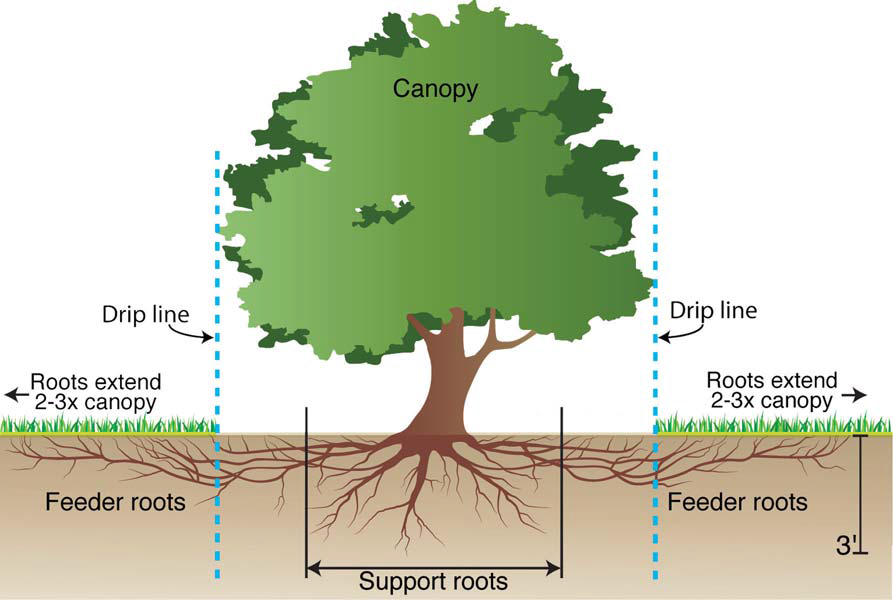
Water Wise Tree Care Guidance Videos
These simple, informative tree-watering videos teach you how to care for your tree during drought:
Videos in English
Videos in Spanish
Additional Resources
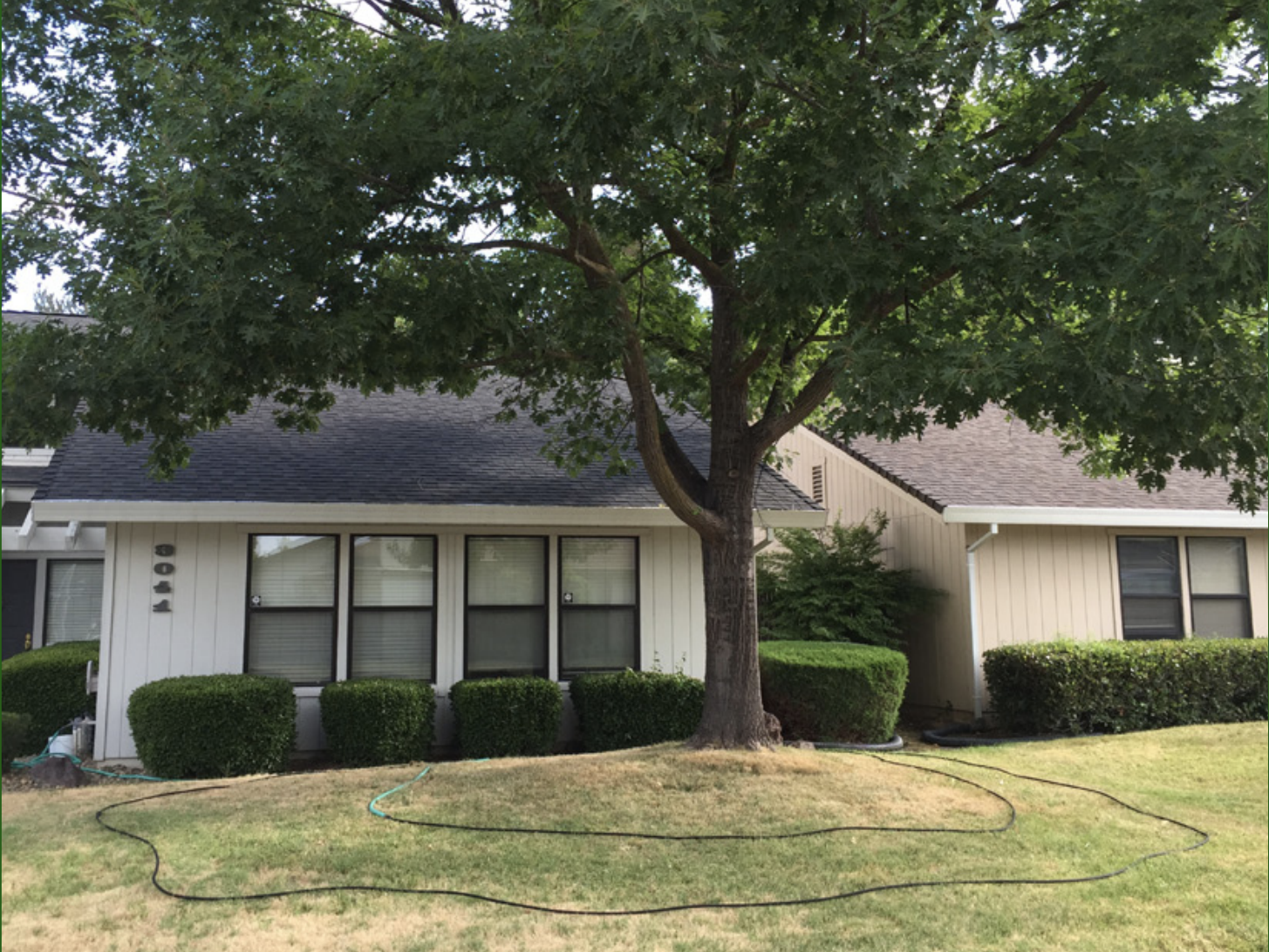
Save our Trees
California ReLeaf partnered with the Department of Water Resources to share information to the public about prioritizing tree care as part of water conservation. Take a look and share the info!
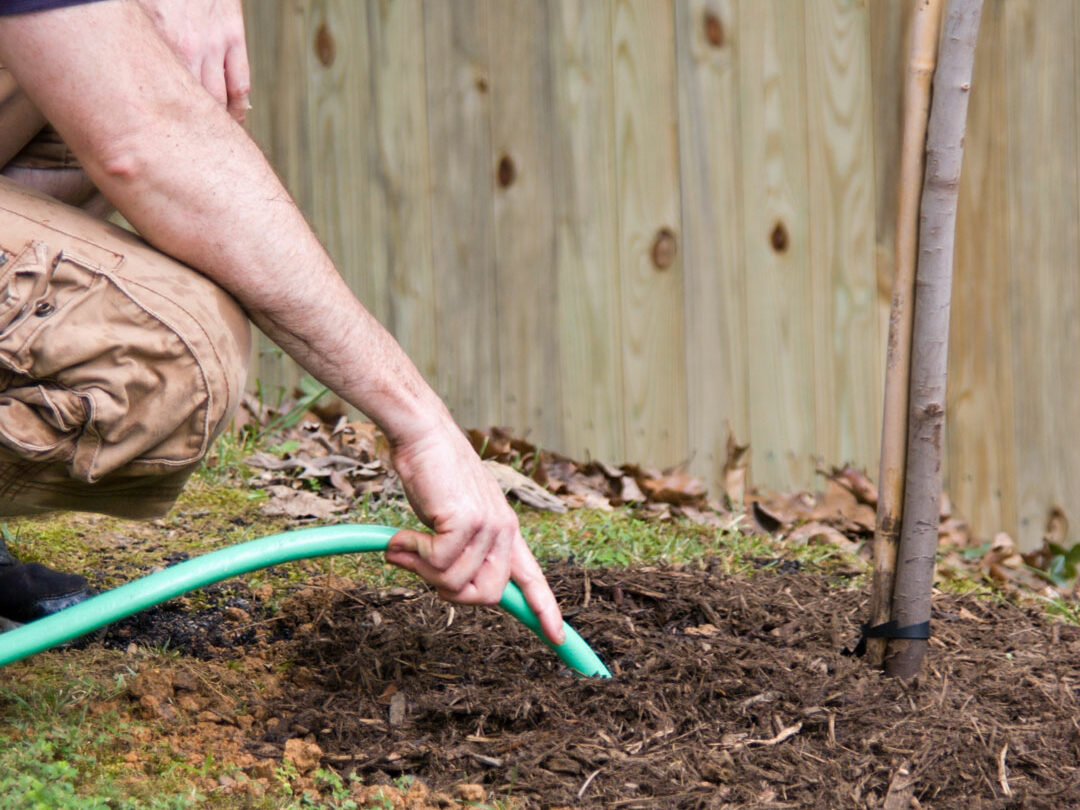
Partner Sites
Our Network members and partners have more great information available about drought and tree care:

Spread the Word
Together we can get the word out and save millions of trees! Here are flyers and marketing materials your organization can use for your drought messaging.
- Trees and Drought Flyer English / Spanish
- Water-Wise Mature Landscape Tree Care Tips (CAL FIRE)
- Water Wise Young Landscape Tree Care Tips (CAL FIRE)
- We Need Trees, and Trees Need Water Flyer by Sacramento Tree Foundation
- SOWAOT Logos
- Save Our Water Webinar (Includes a discussion about messaging)
Save Our Water & Our Trees Social Media Toolkit
Help get dry season tree care messaging to your community! Use our Social Media Toolkit to create your own tree care posts.
Captions to Personalize
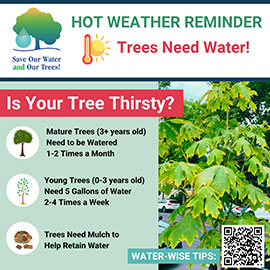
Frequently Asked Questions
Why do I need to take care of my tree during a drought / dry season?
- Trees improve air and water quality
- Trees provide shade to the landscape and reduce water needs
- Trees help keep your home cooler
- Trees slow stormwater runoff and help recharge groundwater
- Trees reduce soil erosion
- Trees add value – sometimes thousands of dollars’ worth – to your home & neighborhood
Trees take a long time to grow. Without helping our trees through the drought, we risk losing their benefits. While the drought may not last long, it can seriously damage or kill trees, and these benefits will take 10, 20, or even 50+ years to get back. Taking care of your trees during the drought ensures that we preserve and protect these life-giving benefits for ourselves, our families, our homes, and our communities.
How can I tell if my tree needs water?
The amount of water your tree needs depends on your soil and tree type. You can check the soil moisture to see if it’s time to water. The easiest way to check soil moisture is to take a long (8”+) screwdriver and poke it into the soil. It will pass easily into moist soil, but be difficult to push into dry soil. If you can’t poke it in at least 6”, it’s time to water. This technique works best in clay and loam soils
Why not just let my trees die?
Some drought-stressed trees, once too dried out, are unable to absorb water once the rains return or you finally begin watering them. Drought stress affects the long-term health and vigor of trees. Your tree may look fine this summer, but die next summer if not watered now. Grass can grow back in just a few weeks, but it can take decades for a tree to grow to full size.
How does supplemental watering help in summer and dry seasons?
How often should I water my mature drought-tolerant trees?
Don't my trees get water when I water my lawn?
Where can I get more info on how to care for my trees?
- Check back often at Save Our Trees for new information on how to care for trees.
- To learn about programs in your neighborhood, you can check with
Tell me more about mulching.
- Reduces the amount of water needed in your yard by 10 – 25%
- Decomposes and releases nutrients into the soil
- Reduces soil compaction so roots can breathe
- Maintains soil temperature and protects roots from cold and heat
- Discourages grass & weeds – which compete for nutrients – from growing near the tree trunk
Spread mulch in a 4- 6 inch layer around your tree – your tree would love the mulch to be as wide as the canopy of the tree. You will need to either remove the lawn underneath the mulch or “sheet mulch” with cardboard or newspaper to prevent the grass from growing up through the mulch. Keep mulch 2 – 3 inches away from the tree trunk to prevent rot around the base of the tree.


